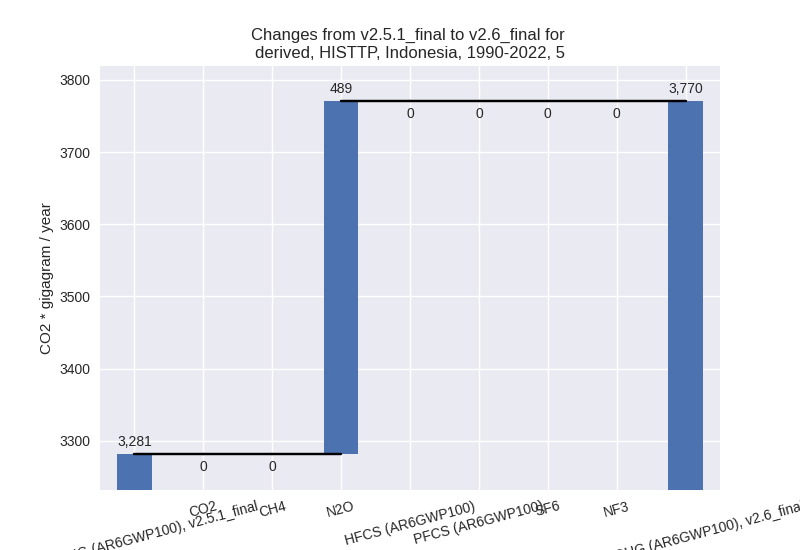Changes in PRIMAP-hist v2.6_final compared to v2.5.1_final for Indonesia
2024-09-24
Johannes Gütschow
Change analysis for Indonesia for PRIMAP-hist v2.6_final compared to v2.5.1_final
Overview over emissions by sector and gas
The following figures show the aggregate national total emissions excluding LULUCF AR6GWP100 for the country reported priority scenario. The dotted linesshow the v2.5.1_final data.
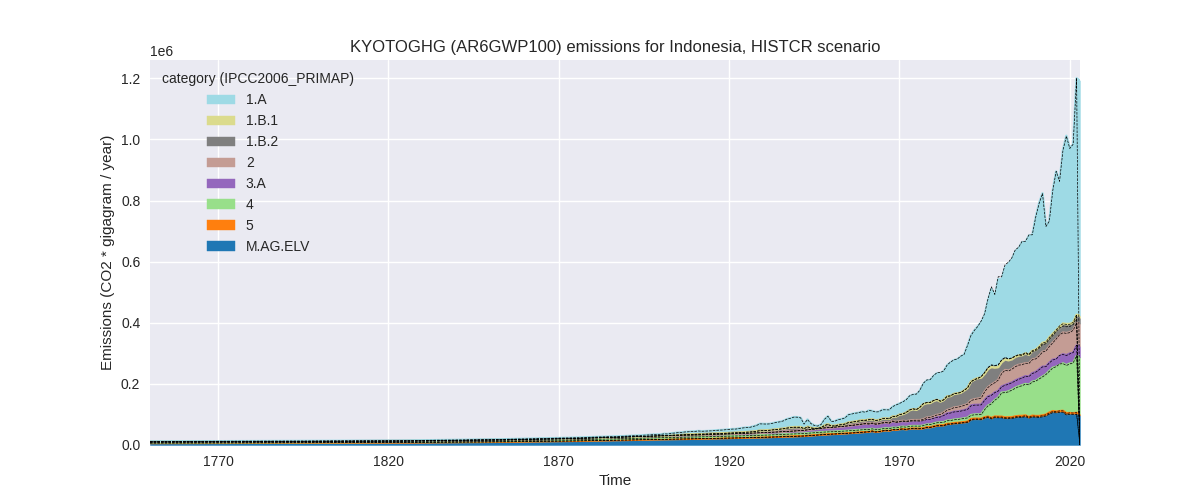
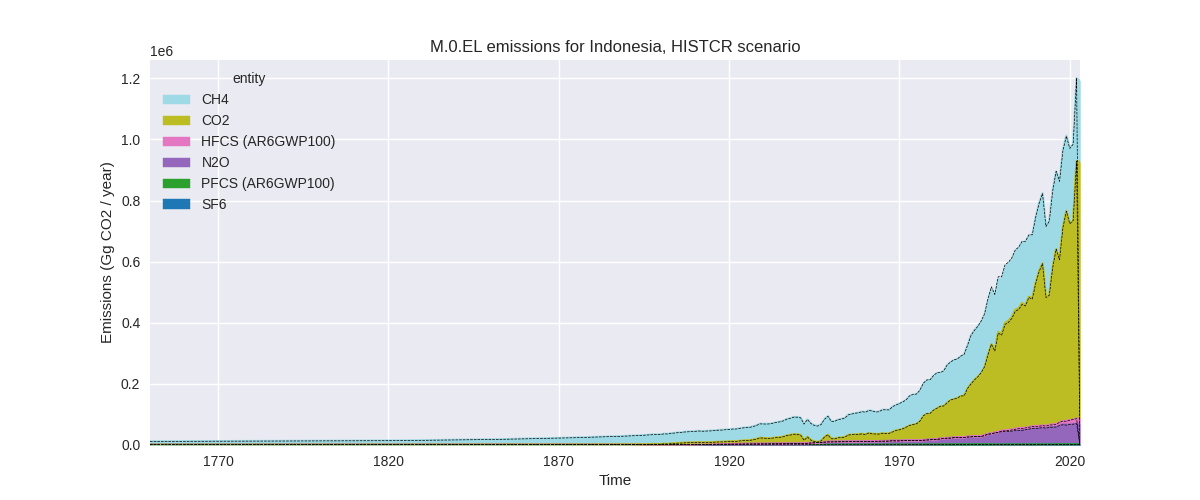
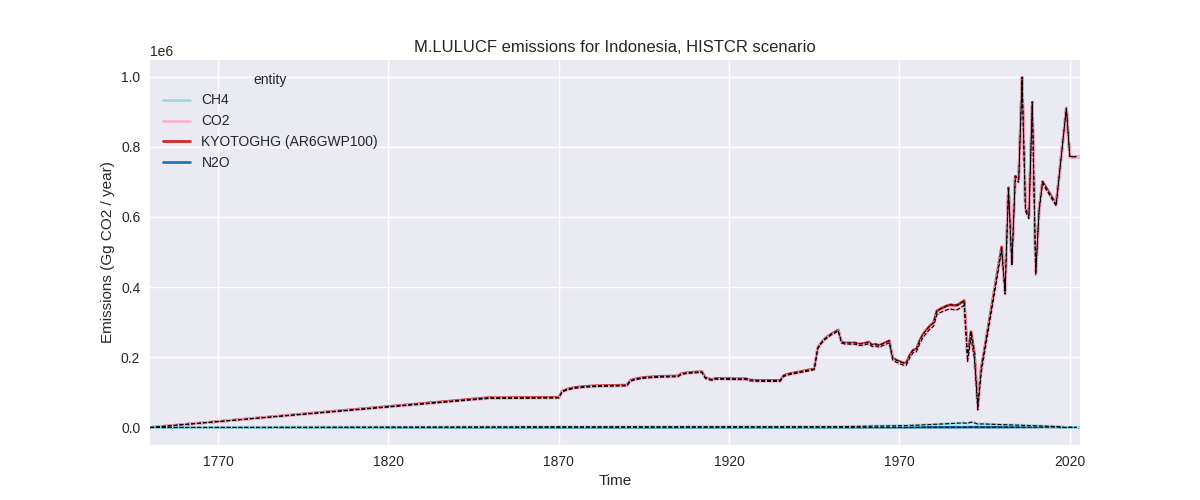
The following figures show the aggregate national total emissions excluding LULUCF AR6GWP100 for the third party priority scenario. The dotted linesshow the v2.5.1_final data.
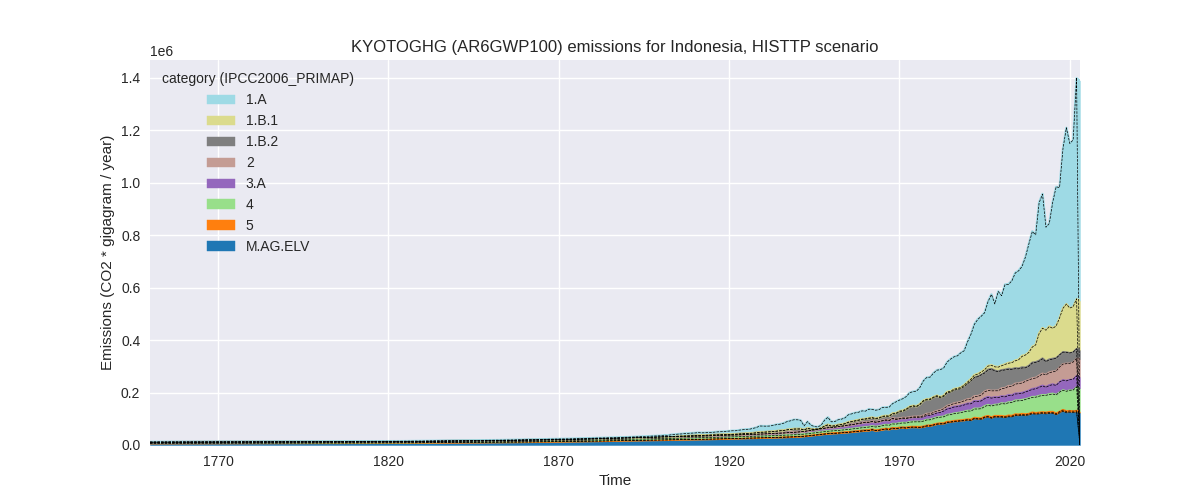
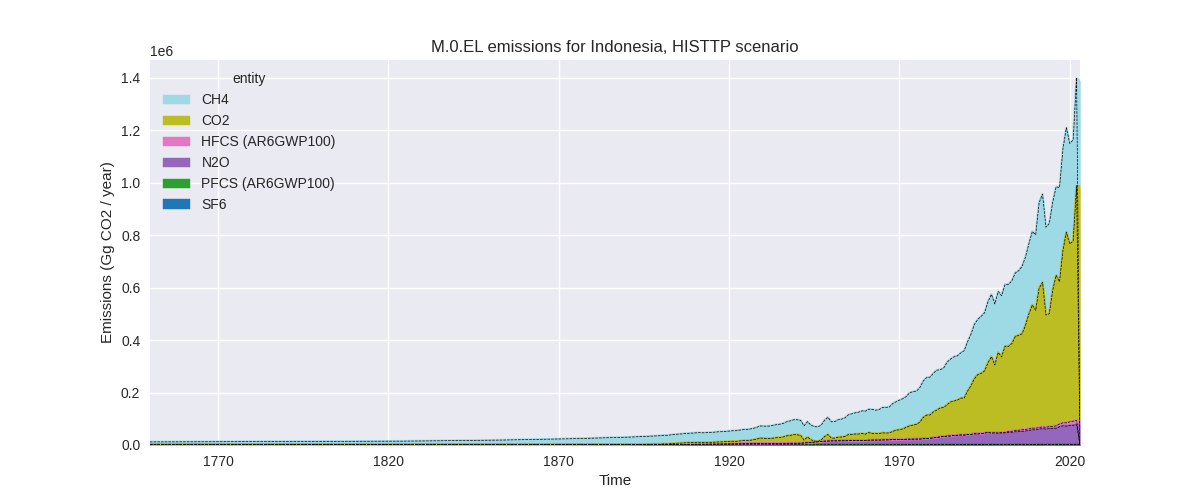
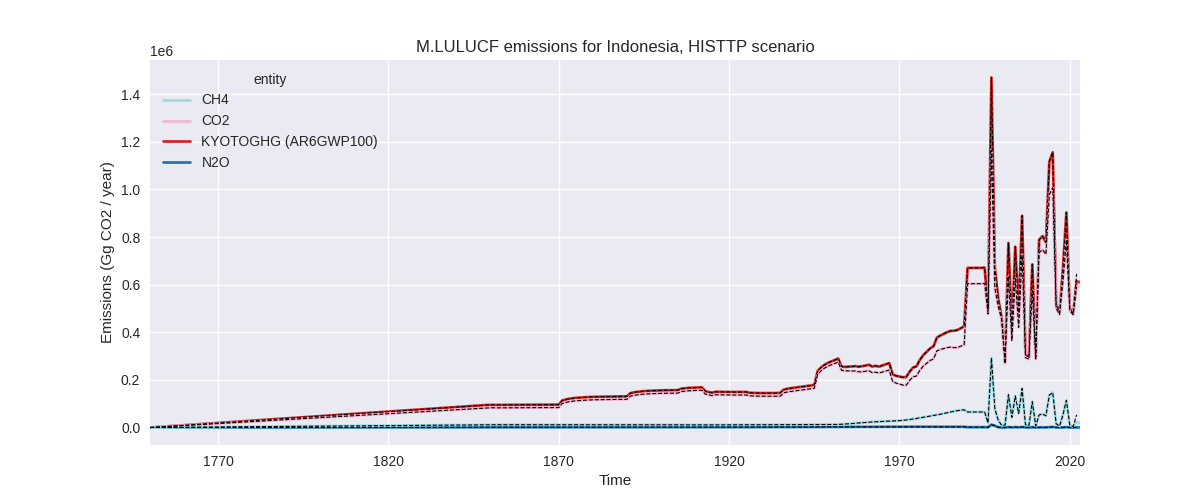
Overview over changes
In the country reported priority scenario we have the following changes for aggregate Kyoto GHG and national total emissions excluding LULUCF (M.0.EL):
- Emissions in 2022 have changed by -0.1%% (-1335.40 Gg CO2 / year)
- Emissions in 1990-2022 have changed by -0.4%% (-2609.72 Gg CO2 / year)
In the third party priority scenario we have the following changes for aggregate Kyoto GHG and national total emissions excluding LULUCF (M.0.EL):
- Emissions in 2022 have changed by -0.2%% (-3023.20 Gg CO2 / year)
- Emissions in 1990-2022 have changed by 0.0%% (227.64 Gg CO2 / year)
Most important changes per scenario and time frame
In the country reported priority scenario the following sector-gas combinations have the highest absolute impact on national total KyotoGHG (AR6GWP100) emissions in 2022 (top 5):
- 1: 5, N2O with -902.81 Gg CO2 / year (-17.2%)
- 2: 1.A, CO2 with -498.18 Gg CO2 / year (-0.1%)
- 3: 2, HFCS (AR6GWP100) with 240.89 Gg CO2 / year (1.5%)
- 4: 4, CH4 with -200.35 Gg CO2 / year (-0.1%)
- 5: 4, N2O with -54.28 Gg CO2 / year (-1.6%)
In the country reported priority scenario the following sector-gas combinations have the highest absolute impact on national total KyotoGHG (AR6GWP100) emissions in 1990-2022 (top 5):
- 1: 1.B.2, CH4 with -2138.36 Gg CO2 / year (-7.3%)
- 2: 1.A, CH4 with -1597.37 Gg CO2 / year (-14.7%)
- 3: 1.A, CO2 with 1151.69 Gg CO2 / year (0.3%)
- 4: 1.B.2, CO2 with -563.34 Gg CO2 / year (-6.6%)
- 5: 5, N2O with 488.85 Gg CO2 / year (14.9%)
In the third party priority scenario the following sector-gas combinations have the highest absolute impact on national total KyotoGHG (AR6GWP100) emissions in 2022 (top 5):
- 1: 4, CH4 with -1781.67 Gg CO2 / year (-2.0%)
- 2: 5, N2O with -902.81 Gg CO2 / year (-17.2%)
- 3: 1.A, CO2 with -539.68 Gg CO2 / year (-0.1%)
- 4: 2, HFCS (AR6GWP100) with 240.89 Gg CO2 / year (1.5%)
- 5: 4, N2O with -114.05 Gg CO2 / year (-3.3%)
In the third party priority scenario the following sector-gas combinations have the highest absolute impact on national total KyotoGHG (AR6GWP100) emissions in 1990-2022 (top 5):
- 1: 5, N2O with 488.85 Gg CO2 / year (14.9%)
- 2: 4, CH4 with -281.54 Gg CO2 / year (-0.5%)
- 3: 1.A, CO2 with -39.36 Gg CO2 / year (-0.0%)
- 4: 1.B.2, CO2 with 9.76 Gg CO2 / year (0.1%)
- 5: 2, HFCS (AR6GWP100) with 7.30 Gg CO2 / year (0.1%)
Notes on data changes
Here we list notes explaining important emissions changes for the country. ’' means that the following text only applies to the TP time series, while means that it only applies to the CR scenario. Otherwise the note applies to both scenarios.
- We have no country reported data, but replaced data for 2000-2012 from BUR2 with BUR1 which has better sector coverage. This changes emissions for the energy sector for 2000-2011. Changes for the whole sector are very small but individual gas-category combination can have higher changes, especially CH4 for 1.B.2 and 1.A.
Changes by sector and gas
For each scenario and time frame the changes are displayed for all individual sectors and all individual gases. In the sector plot we use aggregate Kyoto GHGs in AR6GWP100. In the gas plot we usenational total emissions without LULUCF. ## country reported scenario
2022

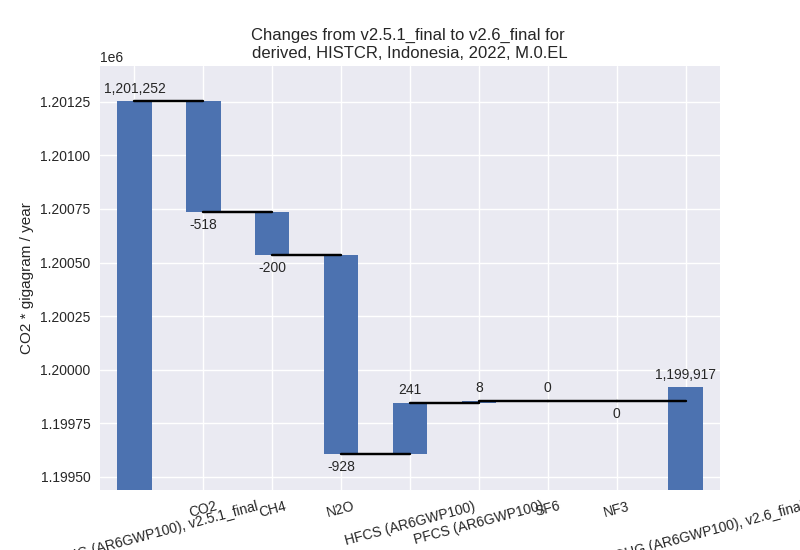
1990-2022
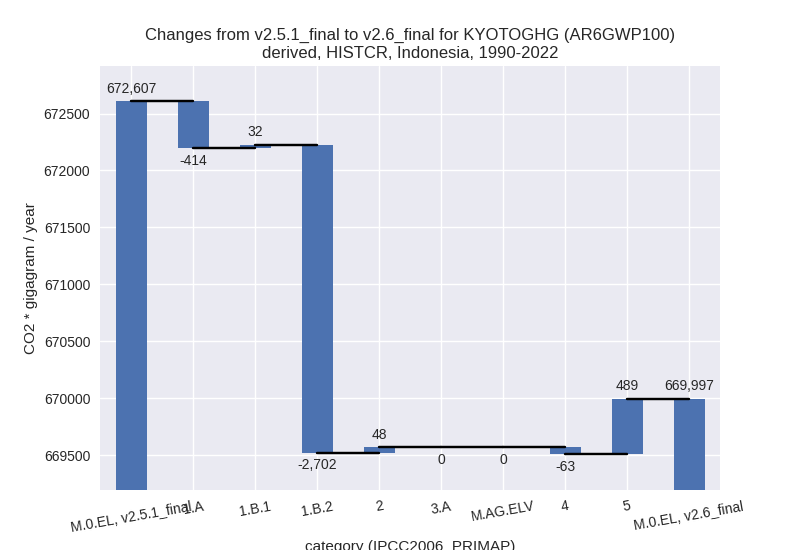
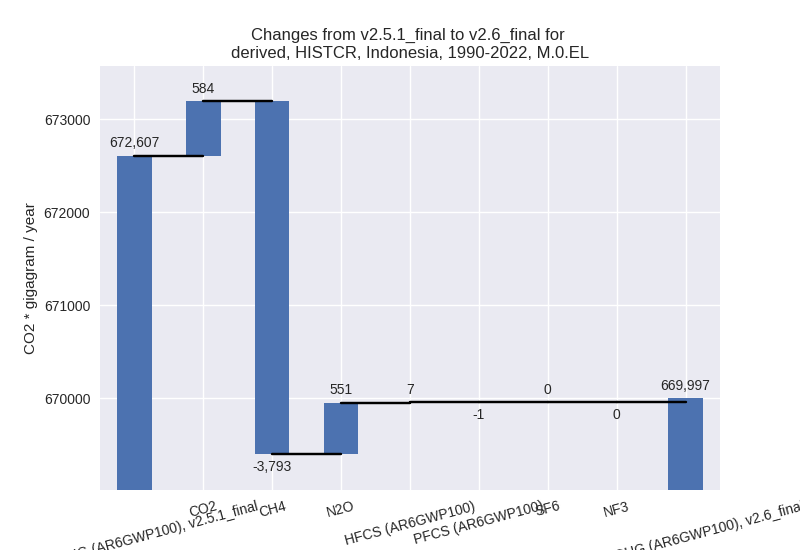
third party scenario
2022

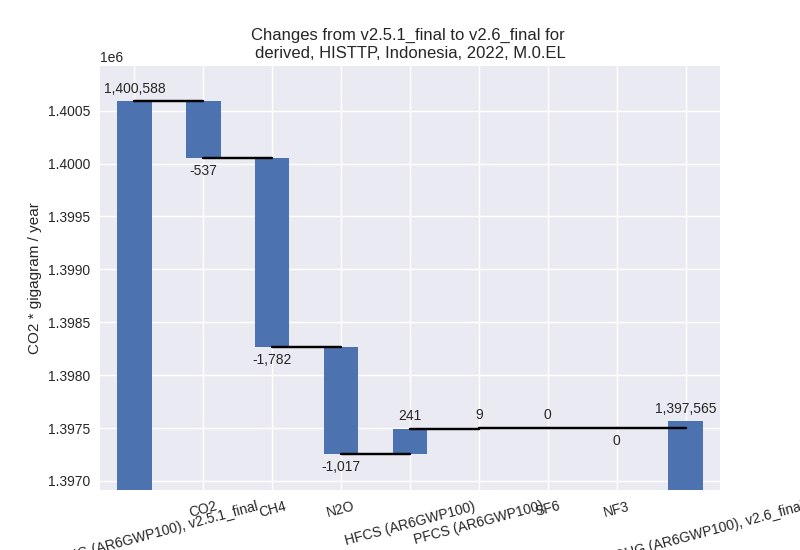
1990-2022
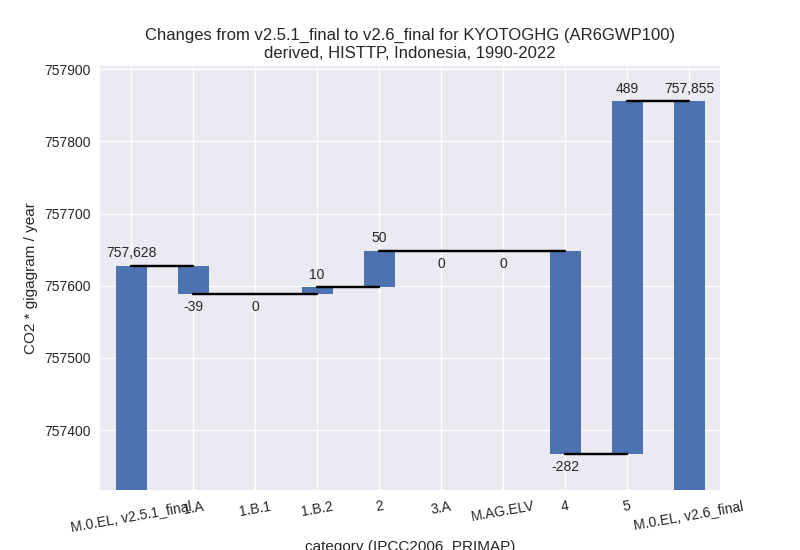
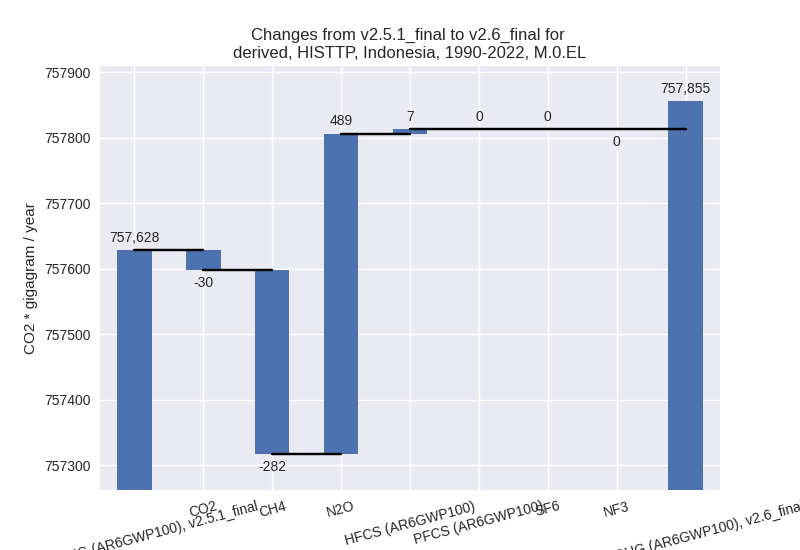
Detailed changes for the scenarios:
country reported scenario (HISTCR):
Most important changes per time frame
For 2022 the following sector-gas combinations have the highest absolute impact on national total KyotoGHG (AR6GWP100) emissions in 2022 (top 5):
- 1: 5, N2O with -902.81 Gg CO2 / year (-17.2%)
- 2: 1.A, CO2 with -498.18 Gg CO2 / year (-0.1%)
- 3: 2, HFCS (AR6GWP100) with 240.89 Gg CO2 / year (1.5%)
- 4: 4, CH4 with -200.35 Gg CO2 / year (-0.1%)
- 5: 4, N2O with -54.28 Gg CO2 / year (-1.6%)
For 1990-2022 the following sector-gas combinations have the highest absolute impact on national total KyotoGHG (AR6GWP100) emissions in 1990-2022 (top 5):
- 1: 1.B.2, CH4 with -2138.36 Gg CO2 / year (-7.3%)
- 2: 1.A, CH4 with -1597.37 Gg CO2 / year (-14.7%)
- 3: 1.A, CO2 with 1151.69 Gg CO2 / year (0.3%)
- 4: 1.B.2, CO2 with -563.34 Gg CO2 / year (-6.6%)
- 5: 5, N2O with 488.85 Gg CO2 / year (14.9%)
Changes in the main sectors for aggregate KyotoGHG (AR6GWP100) are
- 1: Total sectoral emissions in 2022 are 800879.78 Gg CO2 / year which is 66.7% of M.0.EL emissions. 2022 Emissions have changed by -0.1% (-479.98 Gg CO2 / year). 1990-2022 Emissions have changed by -0.8% (-3083.89 Gg CO2 / year).
- 2: Total sectoral emissions in 2022 are 73894.20 Gg CO2 / year which is 6.2% of M.0.EL emissions. 2022 Emissions have changed by 0.4% (312.03 Gg CO2 / year). 1990-2022 Emissions have changed by 0.1% (48.28 Gg CO2 / year).
- M.AG: Total sectoral emissions in 2022 are 135318.27 Gg CO2 / year which is 11.3% of M.0.EL emissions. 2022 Emissions have changed by 0.0% (0.00 Gg CO2 / year). 1990-2022 Emissions have changed by 0.0% (0.00 Gg CO2 / year).
- 4: Total sectoral emissions in 2022 are 185476.67 Gg CO2 / year which is 15.5% of M.0.EL emissions. 2022 Emissions have changed by -0.1% (-264.68 Gg CO2 / year). 1990-2022 Emissions have changed by -0.1% (-62.97 Gg CO2 / year).
- 5: Total sectoral emissions in 2022 are 4347.84 Gg
CO2 / year which is 0.4% of M.0.EL emissions. 2022 Emissions have
changed by -17.2% (-902.81 Gg CO2 /
year). 1990-2022 Emissions have changed by 14.9% (488.85 Gg CO2 / year). For 2022 the
changes per gas
are:
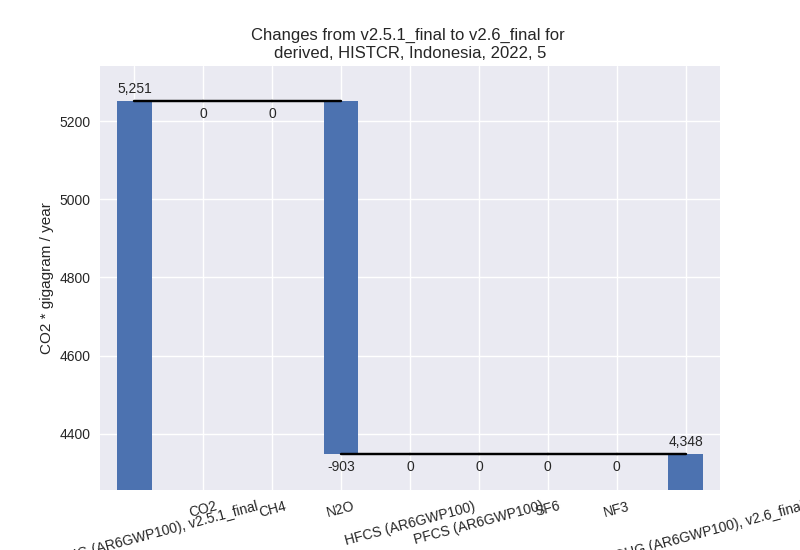
For 1990-2022 the changes per gas are: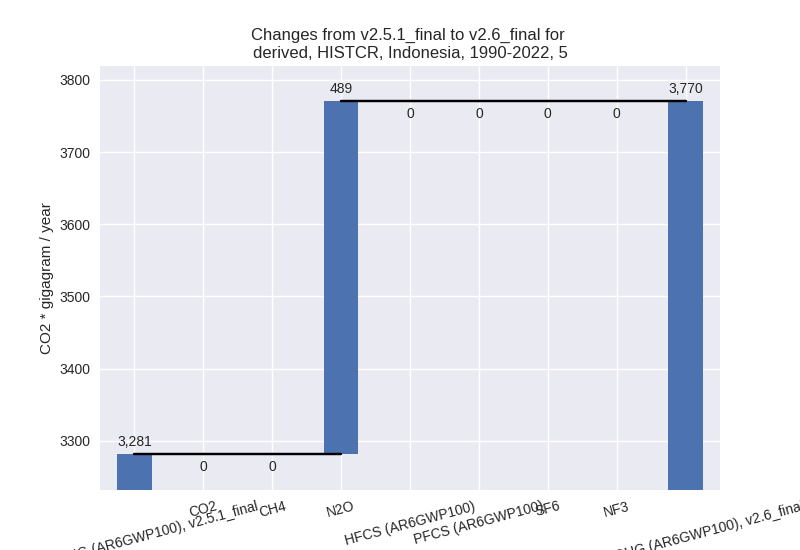
third party scenario (HISTTP):
Most important changes per time frame
For 2022 the following sector-gas combinations have the highest absolute impact on national total KyotoGHG (AR6GWP100) emissions in 2022 (top 5):
- 1: 4, CH4 with -1781.67 Gg CO2 / year (-2.0%)
- 2: 5, N2O with -902.81 Gg CO2 / year (-17.2%)
- 3: 1.A, CO2 with -539.68 Gg CO2 / year (-0.1%)
- 4: 2, HFCS (AR6GWP100) with 240.89 Gg CO2 / year (1.5%)
- 5: 4, N2O with -114.05 Gg CO2 / year (-3.3%)
For 1990-2022 the following sector-gas combinations have the highest absolute impact on national total KyotoGHG (AR6GWP100) emissions in 1990-2022 (top 5):
- 1: 5, N2O with 488.85 Gg CO2 / year (14.9%)
- 2: 4, CH4 with -281.54 Gg CO2 / year (-0.5%)
- 3: 1.A, CO2 with -39.36 Gg CO2 / year (-0.0%)
- 4: 1.B.2, CO2 with 9.76 Gg CO2 / year (0.1%)
- 5: 2, HFCS (AR6GWP100) with 7.30 Gg CO2 / year (0.1%)
Changes in the main sectors for aggregate KyotoGHG (AR6GWP100) are
- 1: Total sectoral emissions in 2022 are 1069872.10 Gg CO2 / year which is 76.6% of M.0.EL emissions. 2022 Emissions have changed by -0.1% (-538.70 Gg CO2 / year). 1990-2022 Emissions have changed by -0.0% (-29.60 Gg CO2 / year).
- 2: Total sectoral emissions in 2022 are 66455.81 Gg CO2 / year which is 4.8% of M.0.EL emissions. 2022 Emissions have changed by 0.5% (313.32 Gg CO2 / year). 1990-2022 Emissions have changed by 0.1% (50.03 Gg CO2 / year).
- M.AG: Total sectoral emissions in 2022 are 167463.53 Gg CO2 / year which is 12.0% of M.0.EL emissions. 2022 Emissions have changed by 0.0% (0.00 Gg CO2 / year). 1990-2022 Emissions have changed by 0.0% (0.00 Gg CO2 / year).
- 4: Total sectoral emissions in 2022 are 89425.65 Gg
CO2 / year which is 6.4% of M.0.EL emissions. 2022 Emissions have
changed by -2.1% (-1894.98 Gg CO2 /
year). 1990-2022 Emissions have changed by -0.5% (-281.65 Gg CO2 / year). For 2022
the changes per gas
are:
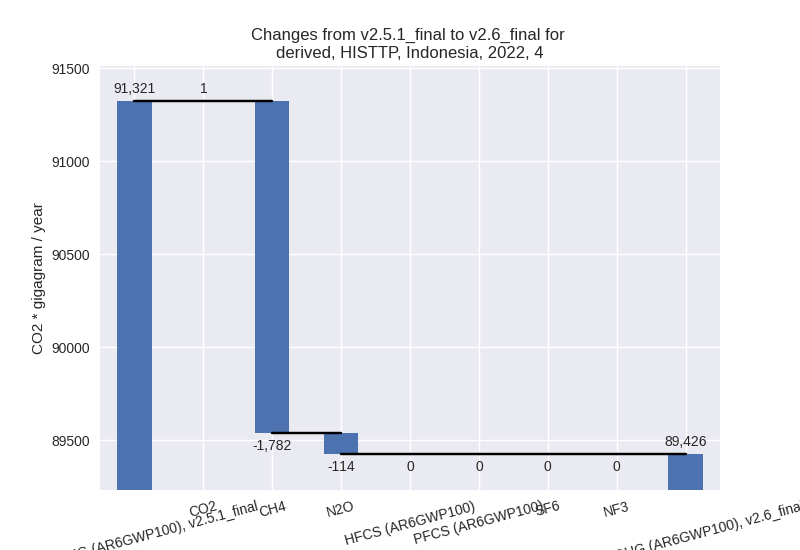
- 5: Total sectoral emissions in 2022 are 4347.84 Gg
CO2 / year which is 0.3% of M.0.EL emissions. 2022 Emissions have
changed by -17.2% (-902.81 Gg CO2 /
year). 1990-2022 Emissions have changed by 14.9% (488.85 Gg CO2 / year). For 2022 the
changes per gas
are:
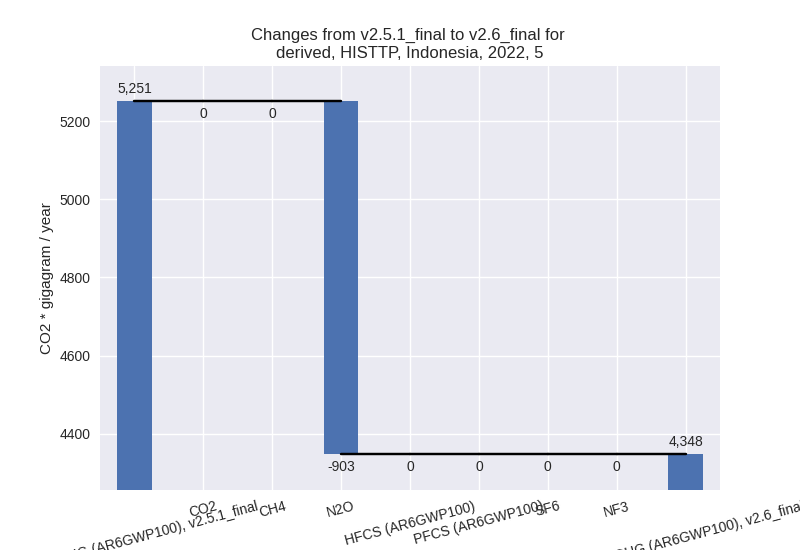
For 1990-2022 the changes per gas are: